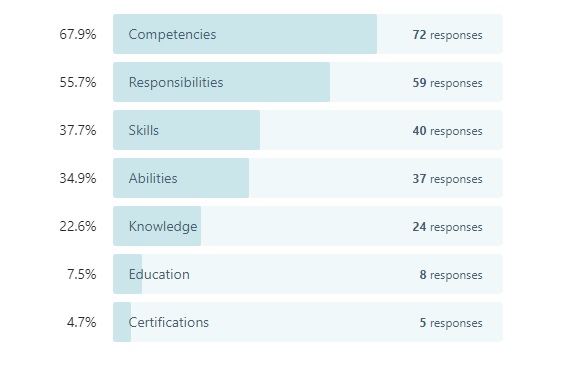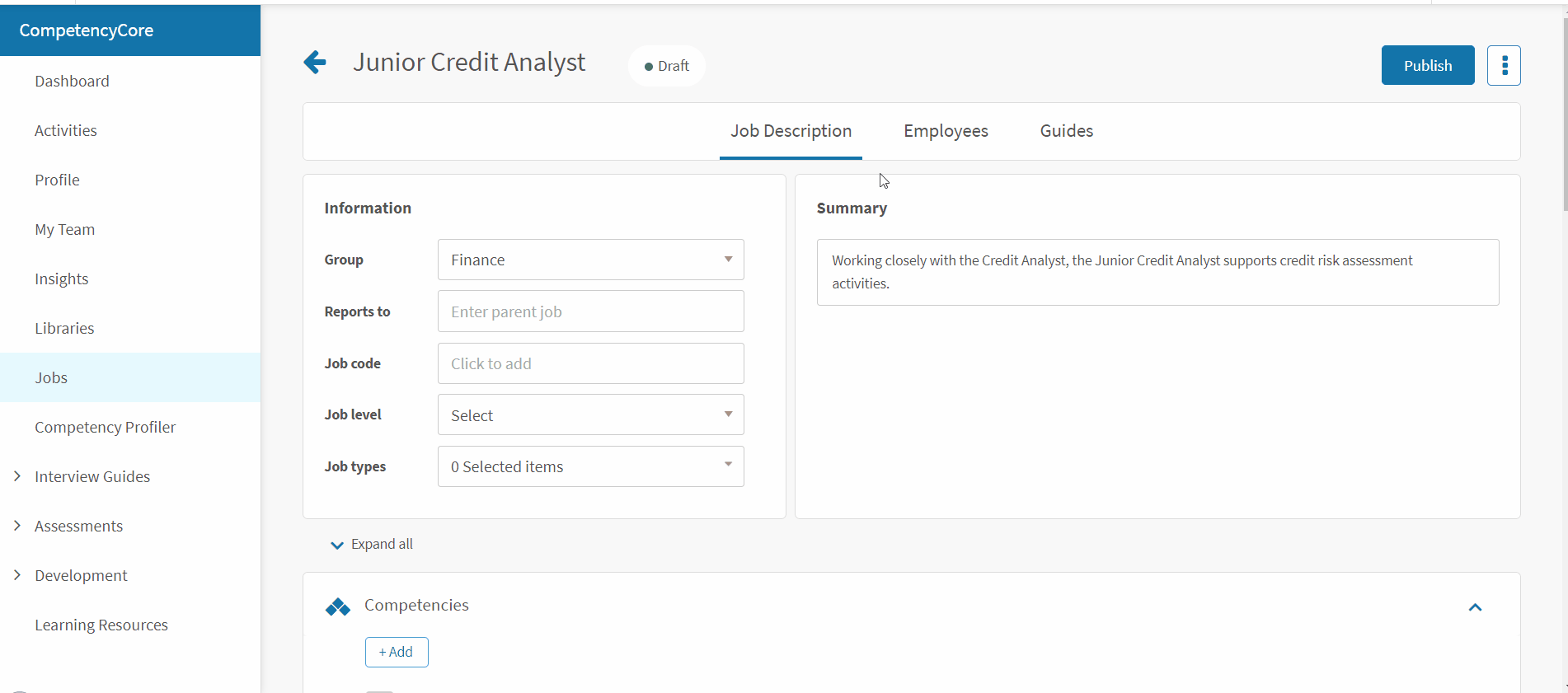Onyeka Ndukwe
In July of this year, HRSG launched its annual State of Job Descriptions survey to get a better idea of exactly what obstacles exist between your HR team and a stellar job description process.
This short post will discuss one of the key insights obtained from various HR professionals in North America and across the world.
What’s Difficult About Writing A Job Description?
Creating a great job description doesn't have to be difficult... if you have the right knowledge and elements in place to achieve this.The details of the job description may vary depending on the industry in which your organization currently operates. A solid job description should (at the very least) have the following elements related to the job position in question:
- Competencies
- Responsibilities
- Skills
- Abilities
- Knowledge
- Education
- Certifications
Survey Data from HRSG's State of Job Descriptions 2020 Survey
Below is the breakdown of the survey data based on a multiple-choice question about the hardest sections of a job description:

According to this data, the top 5 sections that are hard to get “right” on a job description are Competencies, Responsibilities, Skills, Abilities and Knowledge.
It is important for an organization to not only have a standardized definition of these terms but to establish a clear understanding of how these components feed into the big picture when it comes to employee development and career pathing plans.
By addressing these sections, your organization’s job descriptions will become living documents that have immense value for your HR department (beyond your hiring process).
3 Tips to Fix Your Job Description Process
1. Gain a firm grasp of the competencies required for employees in your particular industry
What are your organization’s core competencies? Do you have an established competency framework? What is your knowledge level on competencies?
If none of these questions have ever been addressed at your company then you will have a hard time adding competencies to your job descriptions.
Not sure where to start with your job descriptions? Read this blog post for some helpful tips -> Competency Based Job Descriptions: How to Build Them Correctly [Samples + Templates Inside]
Or watch this video to learn how competencies and job descriptions can work in tandem:
2. Create a shortlist of the key responsibilities for each job description
What are the responsibilities which will be used to measure job performance? Have the responsibilities at your company been updated? This second question is especially important since a lot of job descriptions are filed away in some folder until they are needed.
The right job description tool can help you draw from a number of AI-suggested job responsibilities and enable you to add those responsibilities to the required job description.

*Example of using software to add job responsibilities to a job position
Updated job responsibilities should reflect any changes in the industry related to the job position in question. After all, it would be unfair to assess your HR manager by the number of cold calls they make in a day.
3. Assess the skills, abilities and knowledge currently required for your job descriptions
These three elements (skills, abilities and knowledge) are normally encompassed within competencies but some organizations may have them as separate pieces. Below is an example of the difference between these 3 terms from the viewpoint of a Sales Manager:
- Balancing your time management with your required work (Ability)
- The techniques you learned about leading a sales team (Knowledge)
- Surpassing your monthly sales quota (Skill)
View the 2020 State of Job Descriptions Report
Our complete report contains a wide range of insights from 100+ HR professionals about their job description process. Click here to view the job description survey results -- no sign-in required!
Learn More About Job Descriptions:
- Best Practices for Writing Effective Job Descriptions in 2020
- 8 Job Description Mistakes to Avoid In 2020
Post last updated: January 6, 2021

Submit a Comment